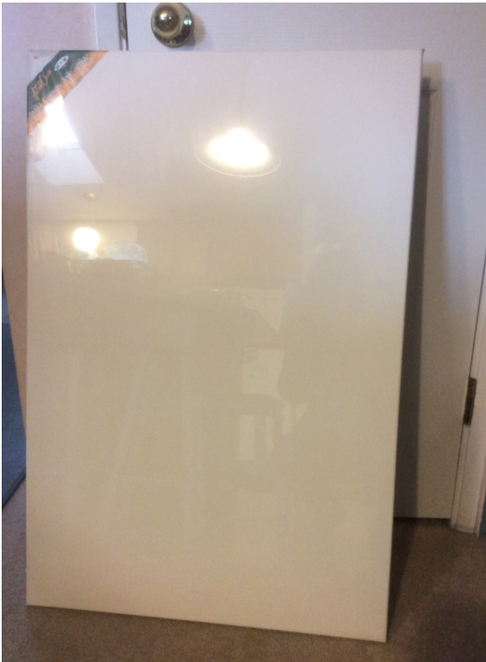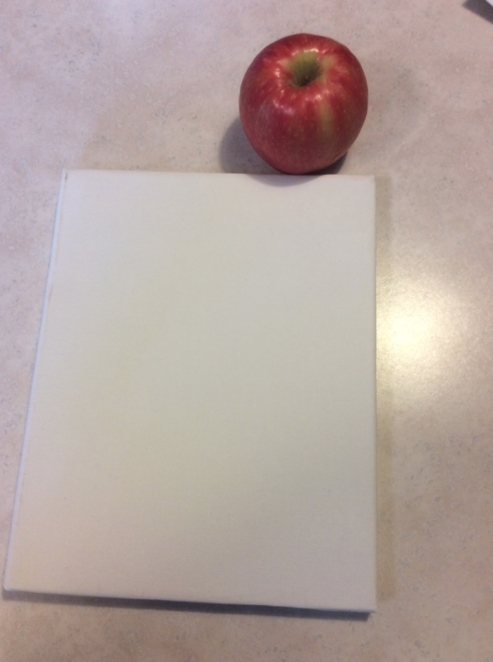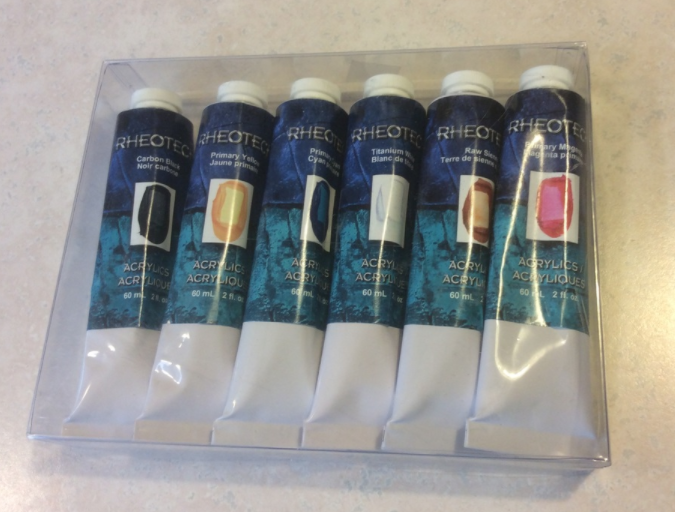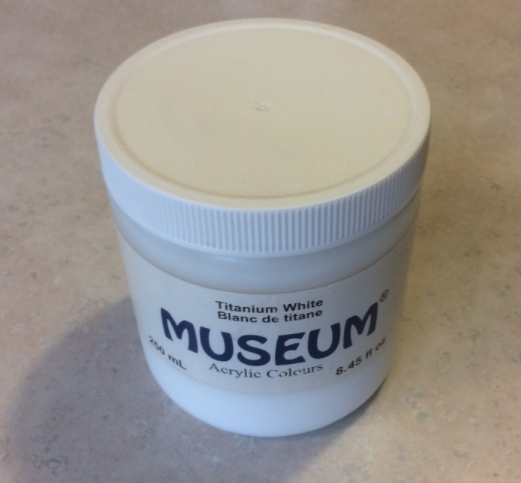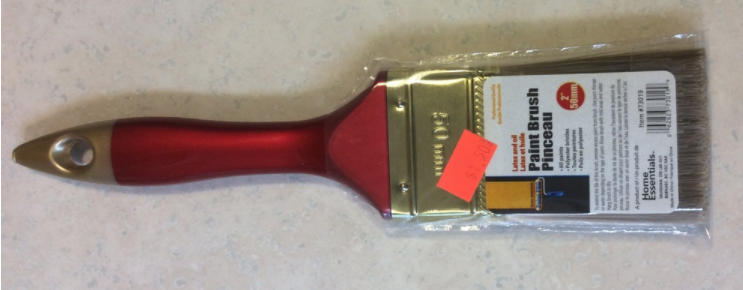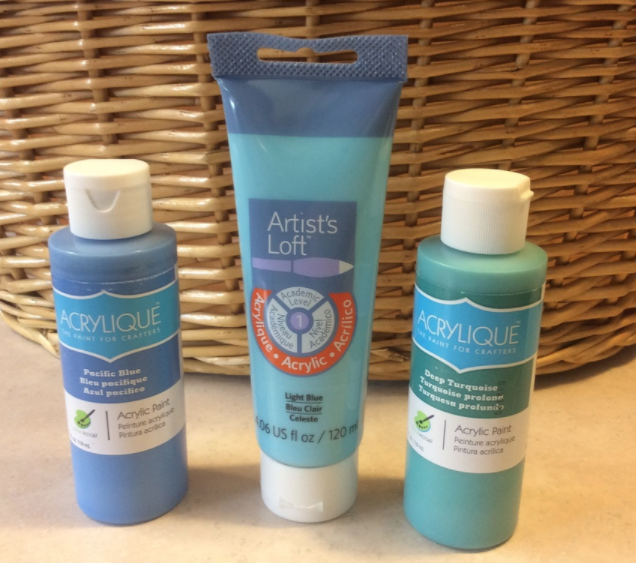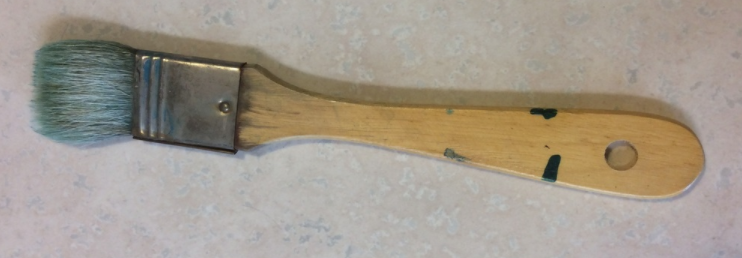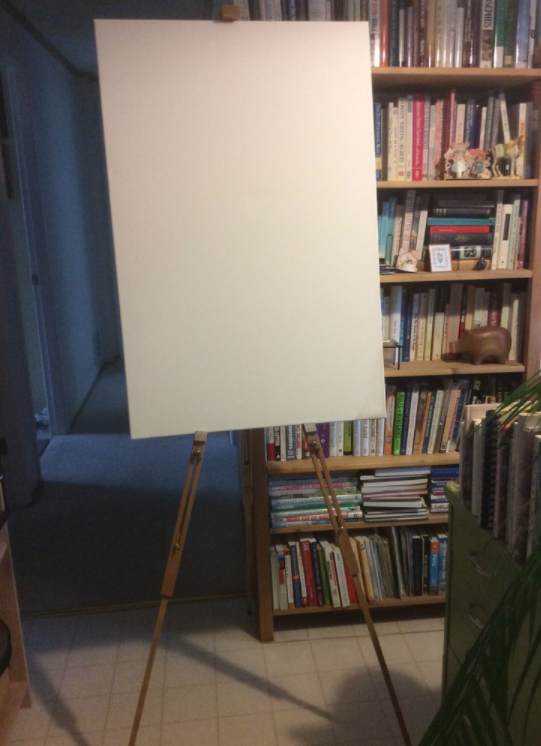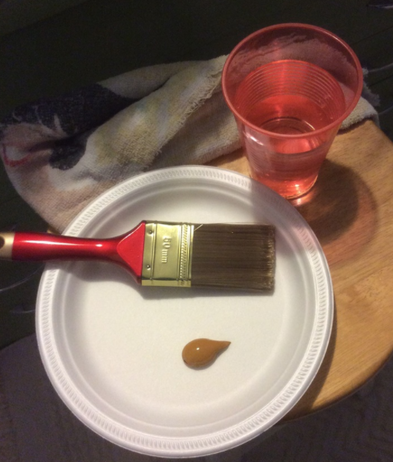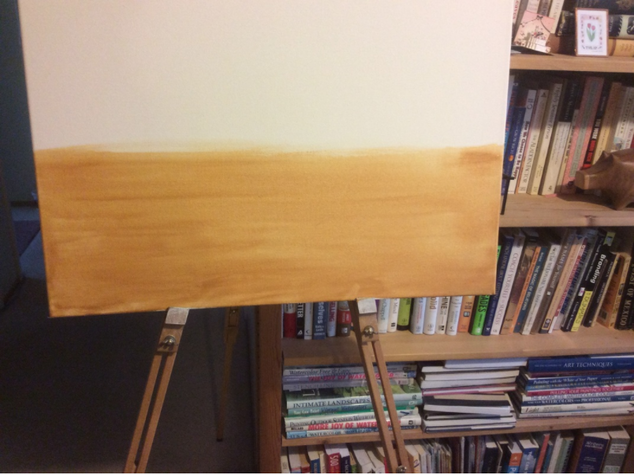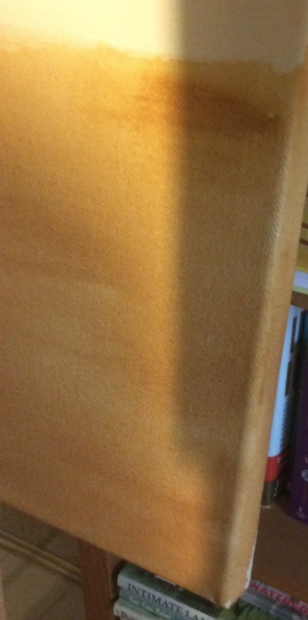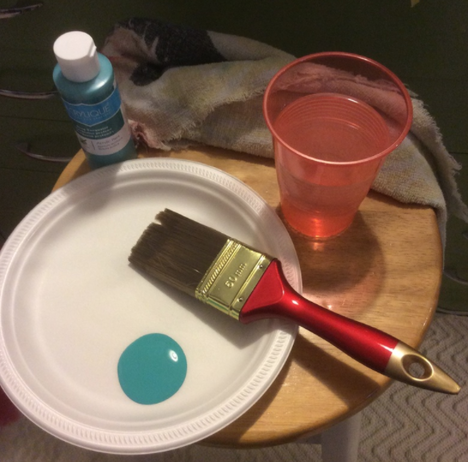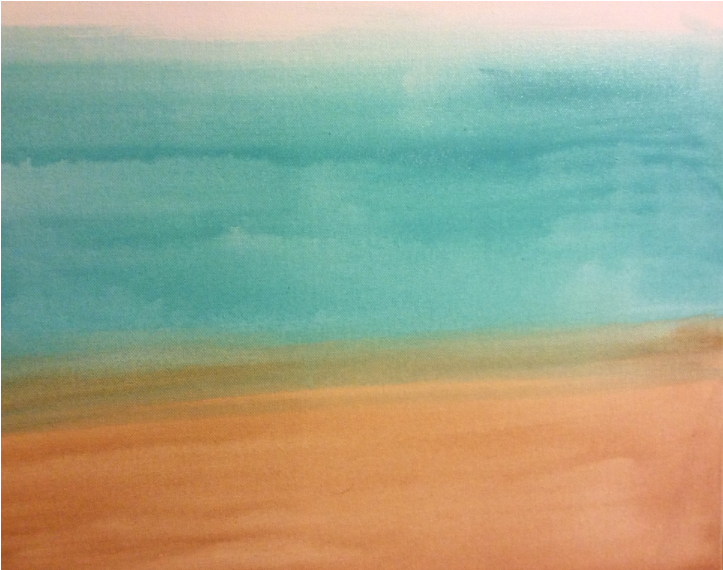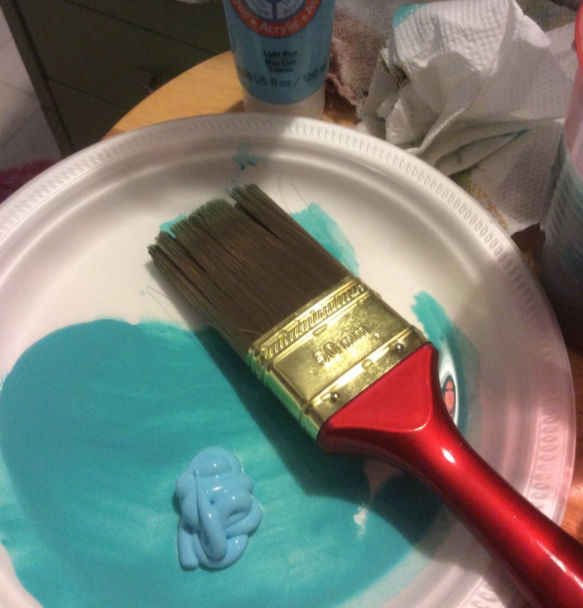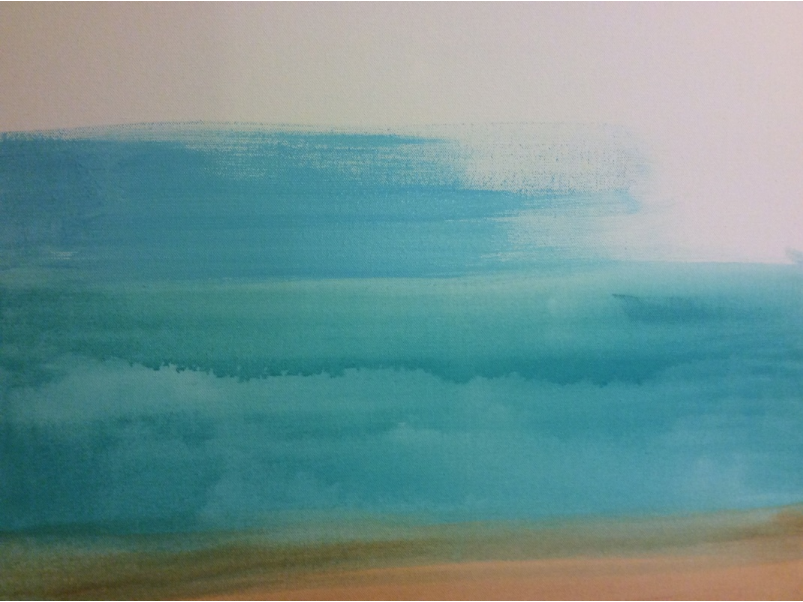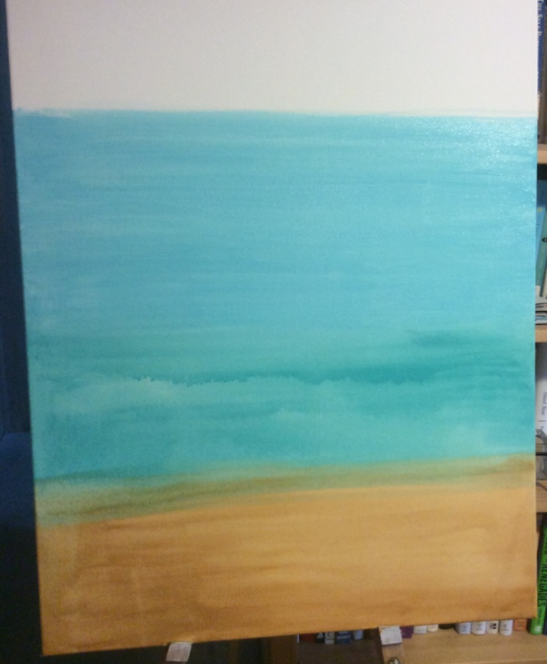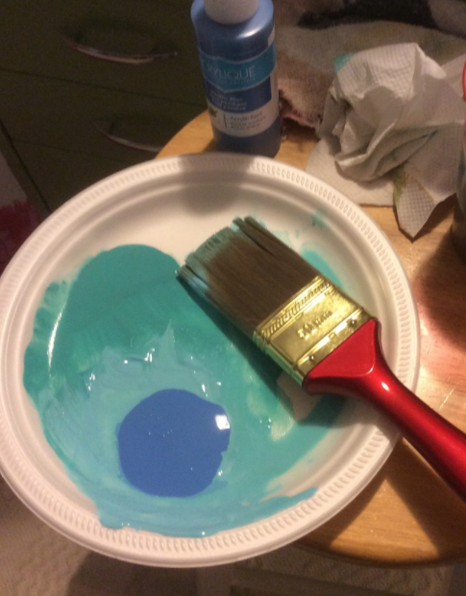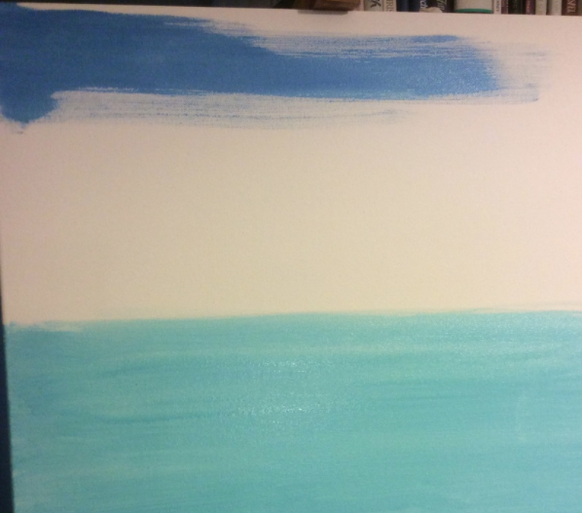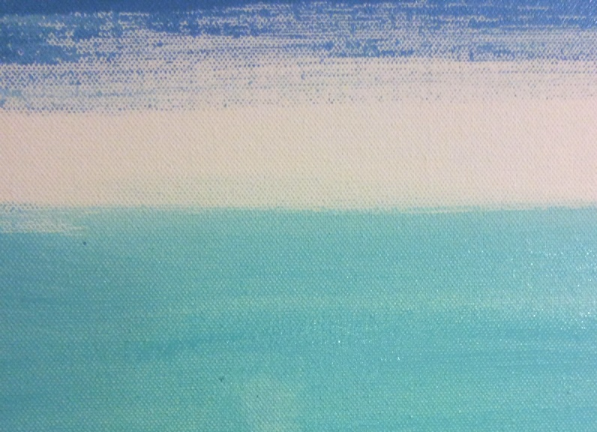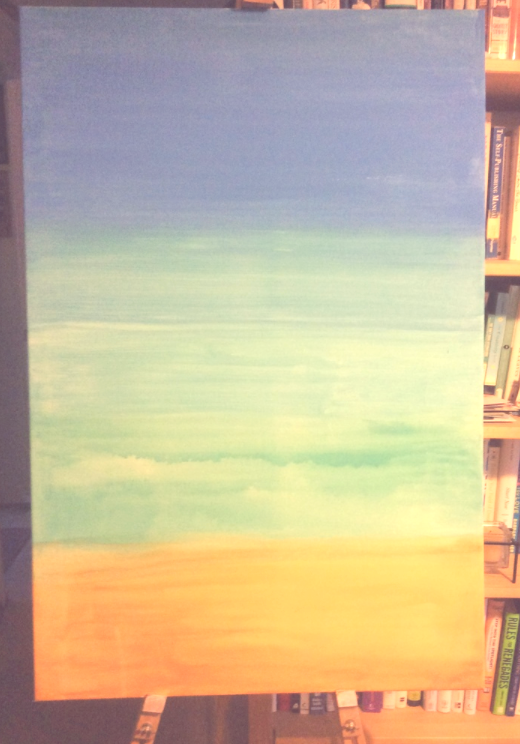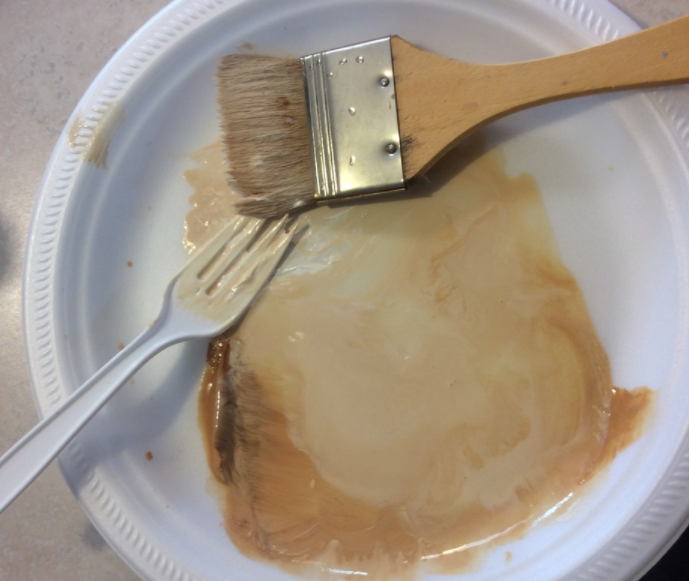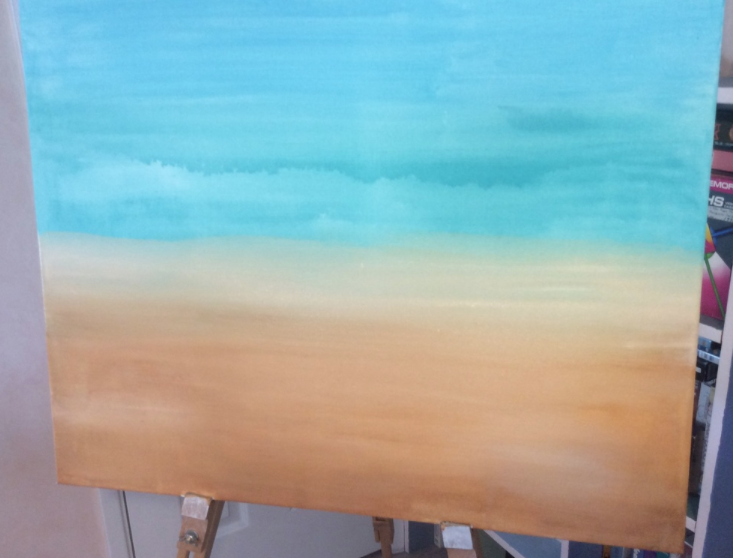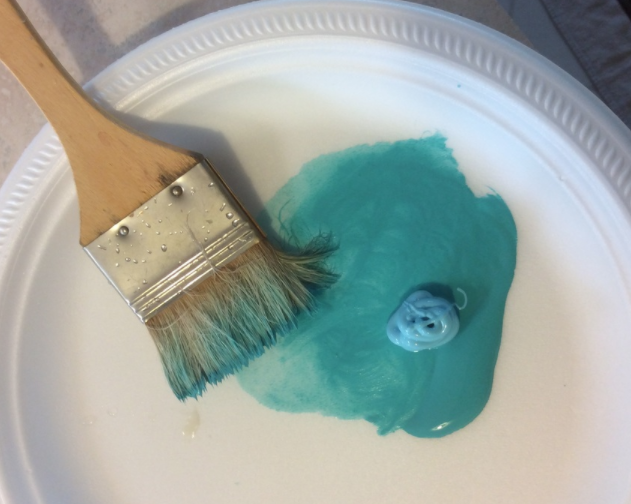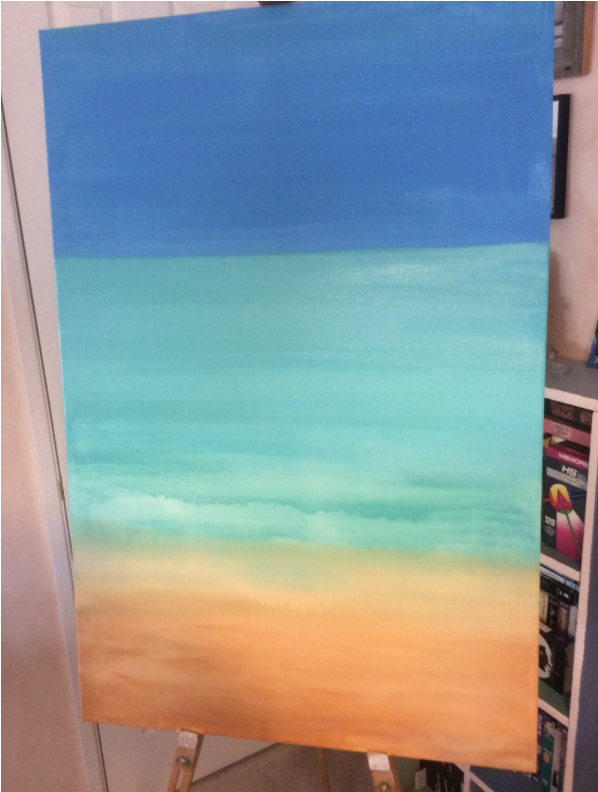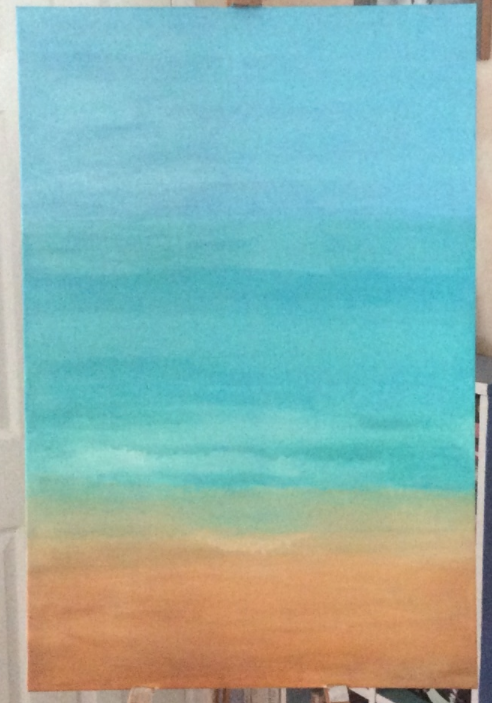Paint a Perfect Seascape
In this beginner seascape painting class you will learn how to paint an easy seascape. It's so simple, and you don't need a lick of talent!
The list for supplies is below with tips on choosing products. Let's get painting!
You will need a stretched canvas to start. You can actually buy these at Dollar stores or find them at art supply stores and craft stores. To buy online, click HERE. I already had this big 24" x 32" stretched canvas, still in its wrapper, so I'm going to use it for the lesson.
If you don't want to use a big canvas, a small one will work just as well. The one on the right is 8" x 10". The apple is for scale — and for lunch.
|
You will also need paints. I had these already but you can find something similar in art and craft stores or online, HERE. Other paint choices are below.
|
It's a good idea to have White and Black in your painting kit thought you don't need them for this particular project. You don't need a tub this size either. A tube will do unless you plan to paint large works of art.
|
I bought these craft acrylics (right) at my local dollar store for $1.25 each. The tube came from Michael's and cost $4.99. (Prices are in Canadian dollars.)
I also bought this 2-inch (50mm) brush at the local dollar store. It cost $1.50. It's not high quality but I can toss it in the trash when I have finished with it.
|
HAVE YOU JOINED MY EMAIL LIST? DON'T MISS A THING. SUBSCRIBE NOW.
Now that you have your supplies ready, let's get started. I have this fancy, schmancy easel but you don't need one. In fact, as you'll see, it's probably better to work with your canvas flat. Put some newspaper or old towels under it before you start.
Now that you have your supplies ready, let's get started. I have this fancy, schmancy easel but you don't need one. In fact, as you'll see, it's probably better to work with your canvas flat. Put some newspaper or old towels under it before you start.
Start with the sand colour, which can be any shade you think resembles sand. If you use paper or foam plates for mixing your paint, you have almost no clean-up. Ditto, for the plastic cup I used for water. Just squeeze a blob of paint on the plate and mix water with it until it is fluid.
When your paint is the desired consistency, start painting it in long strokes across the bottom of the canvas. If it is too runny, it will drip and bleed, especially if your canvas is at an angle like mine.
When your paint is the desired consistency, start painting it in long strokes across the bottom of the canvas. If it is too runny, it will drip and bleed, especially if your canvas is at an angle like mine.
Apply your sand colour about 1/3 of the way up the canvas, or less if you want more water and sky than sand. Be sure to paint the edges of the canvas as well since you may want to hang it unframed.
|
When you're happy with your sand layer, wash out your brush in the sink and get a new plate for your blue paint. Acrylic paint dries fast but you don't have to wait for your sand layer to dry before starting on your water colour. You can blend them at the "water's edge". I used aqua green for the first colour as water looks darker the farther from the shore it is.
|
Paint your aqua colour above the sand. Notice how I blended and overlapped them where they meet. You can also see where the paint was a little too runny but I though it looked like a wave coming in so I left it like that. I did get some drips running down into the sand, oops!, and had to do some fast brushwork.
Next I squirted my light blue paint right on top of the leftover aqua paint as I wanted to blend them anyway. Aren't they pretty?
Apply the light blue above the aqua, blending them together with the brush. You can clearly see the watermark here where the aqua paint was too wet and bled downward.
Take the light blue paint up to the bottom of the upper third of the canvas. You can see the transition of the colours but that's easy to fix so it looks more gradual. Stay tuned...
This time I decided to paint from the top down in case the paint was too runny. I didn't want that dark blue making rivulets into the aqua water.
Here is the "first draft" of the painting. The light changed because it's pouring rain outside and so dark. I could leave it like this but I'm not going to. The lovely thing about acrylics is that you can paint over them and get a different look.
|
After the paint had dried thoroughly ( a couple of days) I decided to make the beach area larger so it covered more of the canvas. I also wanted some of it to be lighter, so I added some white into the sand coloured paint and mixed it well with water. The fork wasn't the best instrument for scooping paint from the tub of white but it was all I could find.
|
I painted over the beach area getting lighter (using less water) as I applied it higher on the canvas. It's important not to work the paint too much. If the first layer is not very dry, the new layer softens the paint beneath it and things get messy.
I wanted to make the water look more Caribbean or South Pacific so I mixed some light blue with the turquoise and painted over the water area again. You can see how it looks below compared to the draft above.
I also thought my sky looked too dark and ominous so I used the light blue and painted a couple of coats over the darker blue allowing it to show through a little and blending it into the horizon. Keep painting until you're happy with the results.
Here is the finished painting. I decided rather than having is distinct horizon line, to allow the change in the blues to suggest it in a more abstract way.
Here is the finished painting. I decided rather than having is distinct horizon line, to allow the change in the blues to suggest it in a more abstract way.
If you've done your painting, please snap a photo and email it to me or post it on my Facebook page. I'd love to see how your interpretation of the instructions turned out. Keep in mind that your painting doesn't have to look exactly like mine.
I hope you enjoyed this class. Please feel free to pass on any ideas or feedback you may have.
I hope you enjoyed this class. Please feel free to pass on any ideas or feedback you may have.
|
|
